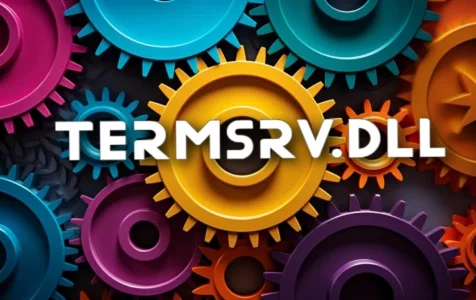The termsrv.dll file is at the crux of facilitating remote desktop access on Windows systems, allowing one RDP session to connect to a computer at a time. Its name stands for “Terminal Server Service” and it’s a legitimate Dynamic Link Library (DLL) file, essential for the Remote Desktop Session Host Server Remote Connections Manager. Found in the “C:\Windows\System32” directory, this file is Microsoft’s proprietary code that ensures only one remote connection can be active on non-server editions of Windows—a critical component enforcing Microsoft’s licensing policies.
What Does It Do?
In the Windows world, termsrv.dll plays a pivotal role. Should you venture into enabling multiple RDP sessions on your non-server Windows edition, you’ll find yourself modifying this file. For the tech-savvy, this might seem like a tempting foray into expanding the capabilities of your machine; however, it treads into the complex territory of compliance with Microsoft’s licensing terms. An untouched version of termsrv.dll ensures the security and integrity of your Remote Desktop services by adhering strictly to Microsoft’s design. But should one decide to modify this file to allow concurrent remote desktop connections, it’s analogous to lifting the limiter on a car—more power, more risk.
Is Termsrv.dll Safe, or Could It Be a Virus or Malware?
Is it safe to run? Generally, yes, unless it has been tampered with. As it’s not a core Windows file, termsrv.dll does not affect the boot or shutdown cycles of your operating system, nor does it have a visible window. But this brings us to the next point: can it be a virus or malware?
Anything resembling termsrv.dll but located outside its usual System32 folder habitat might be an imposter; malware often masquerades under the guise of legitimate-sounding file names. Therefore, it is essential to always verify the processes and their origins running on your computer. Tools like Security Task Manager can assist in identifying whether the DLL in question is benign or a threat.
Expert Tip: For smoother PC performance, consider using a PC optimization tool. It handles junk files, incorrect settings, and harmful apps. Make sure it's right for your system, and always check the EULA and Privacy Policy.
Special offer. About Outbyte, uninstall instructions, EULA, Privacy Policy.
How to Resolve Issues with Termsrv.dll?
If you’re encountering issues with termsrv.dll—errors, suspicions of corruption, or you’ve tampered with it and need to revert to its original settings—here’s how you can address these dilemmas:
1. To replace a corrupted termsrv.dll file, you can usually restore it from the original Windows installation media or download a fresh copy of the file from a reliable source.
2. Before making any modifications, it’s highly recommended to back up the current termsrv.dll file. If things go haywire, you can restore your system to a point before the alteration.
3. Should you find yourself with an altered termsrv.dll that has caused issues on your system, you can repair your Operating System to its default state using Windows recovery options or by performing a system restore to a point in time before the problem arose.
In the realm of community discussion, users have explored and shared their experiences with termsrv.dll extensively. Whether it’s insights into the file’s operations or advice on handling updates that affect its function, these forums act as valuable knowledge reservoirs.
If you’re venturing beyond what’s commonly traveled, it’s paramount to ensure you’re armored with antivirus tools and ready to face the consequences of venturing outside the standard operational parameters. Accessing remote desktop services is an essential function for many, and while termsrv.dll plays a vital role in this ecosystem, treading cautiously will ensure the security and integrity of your system remain uncompromised.
